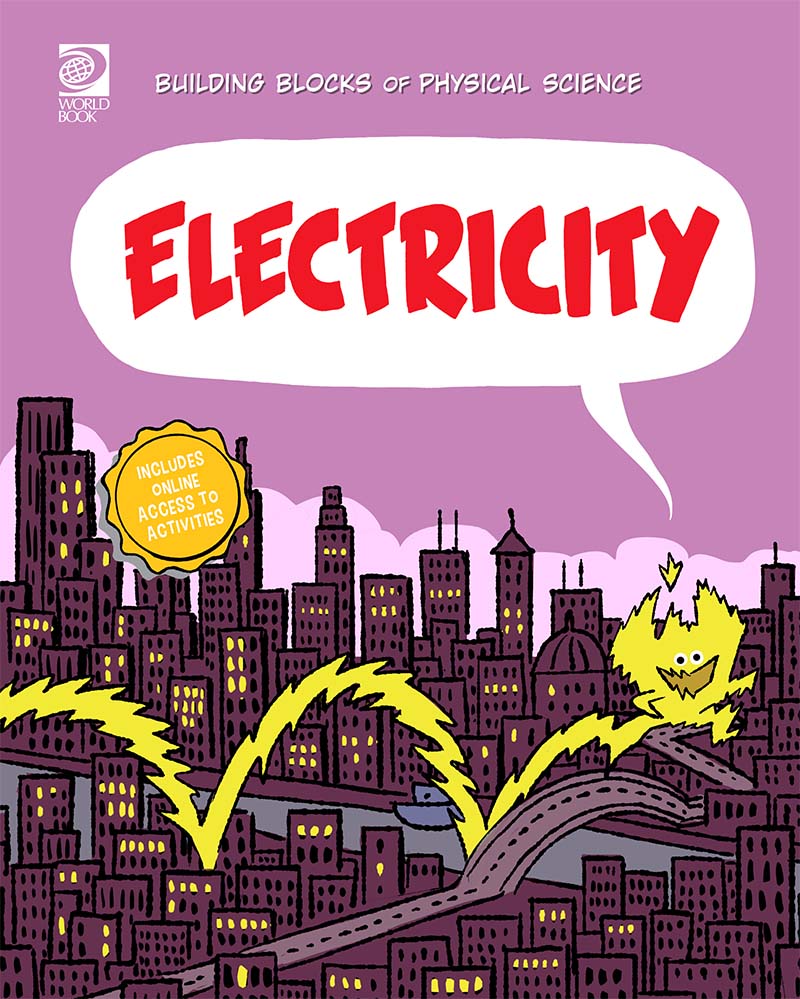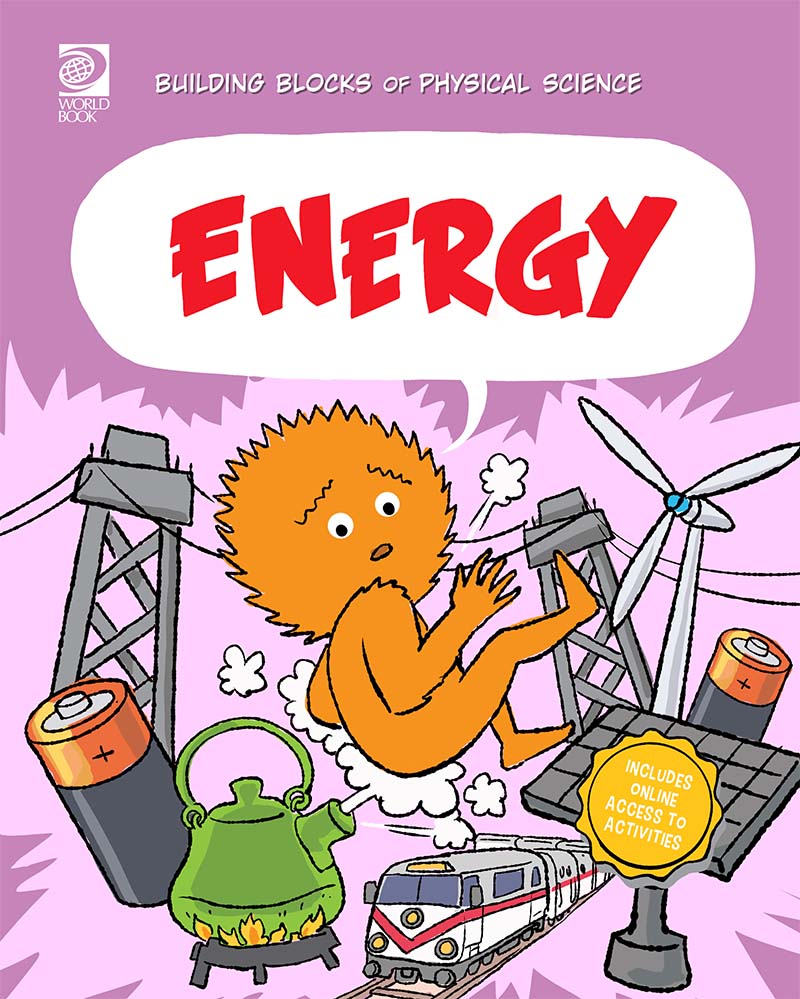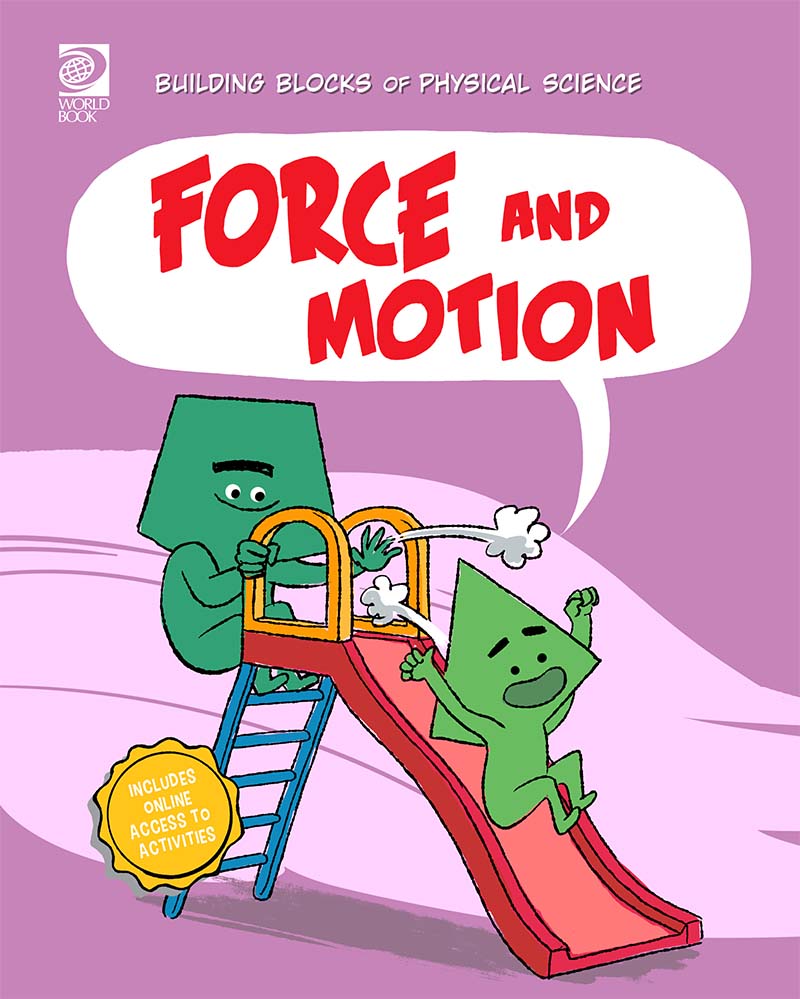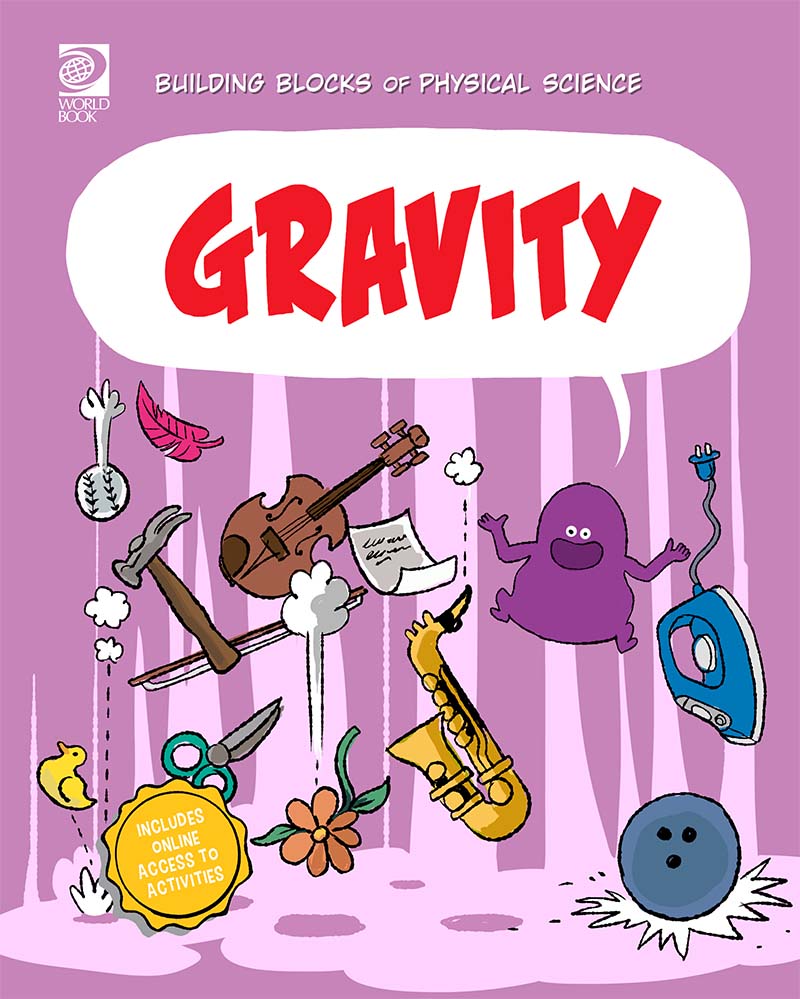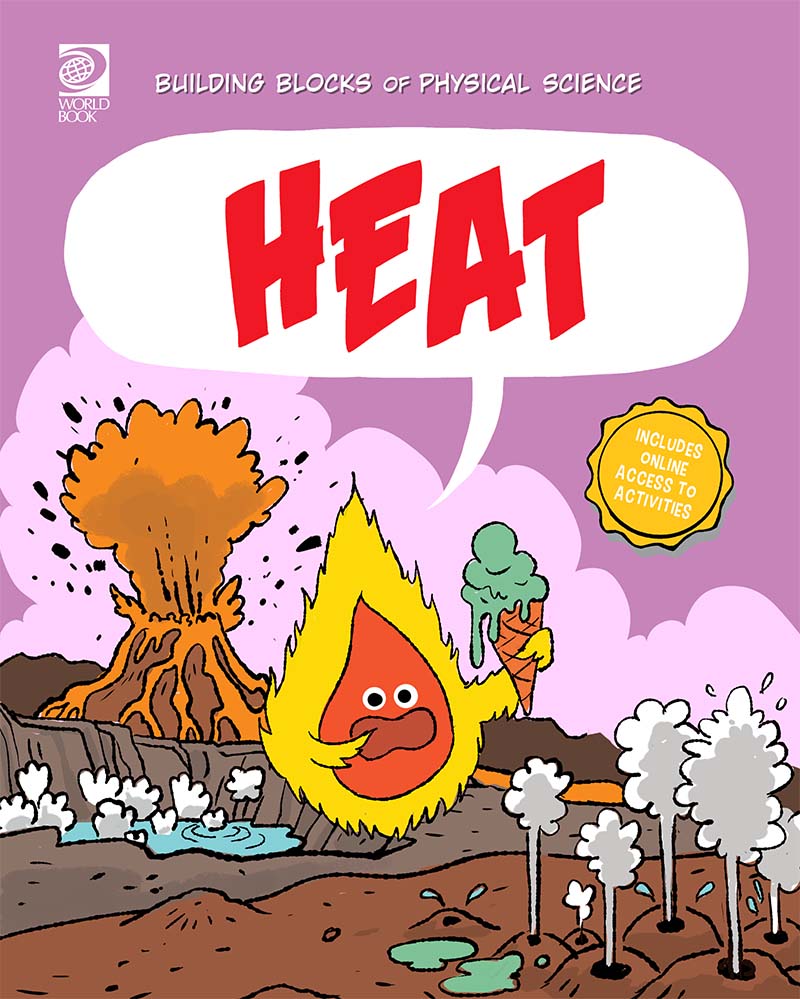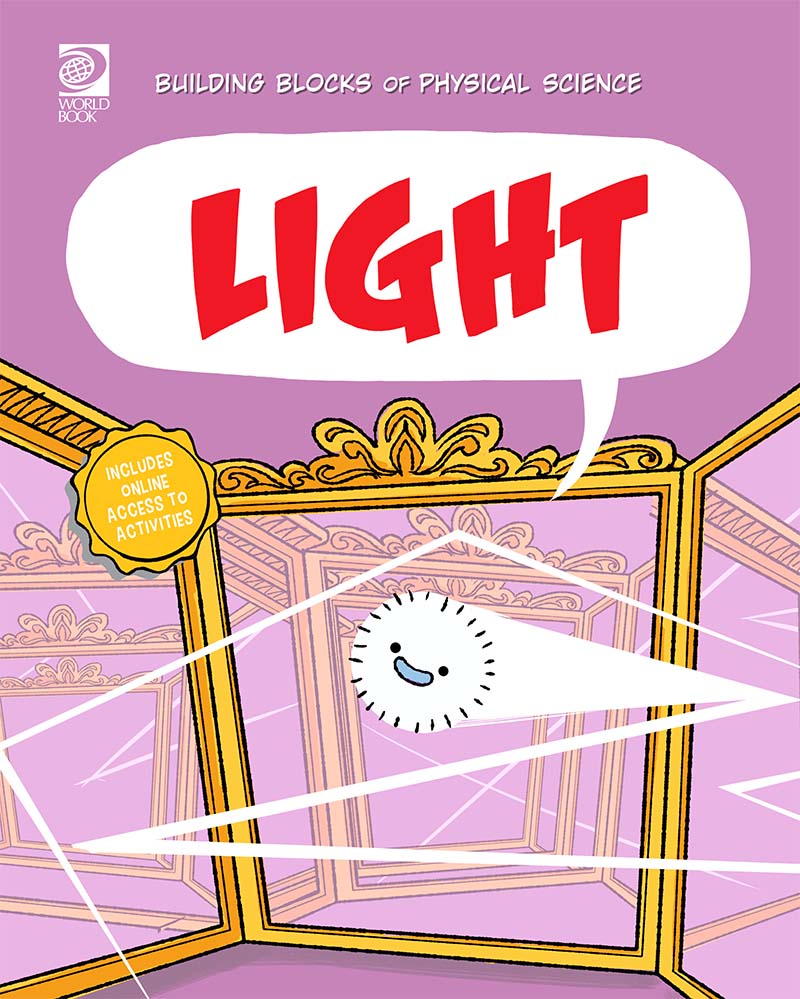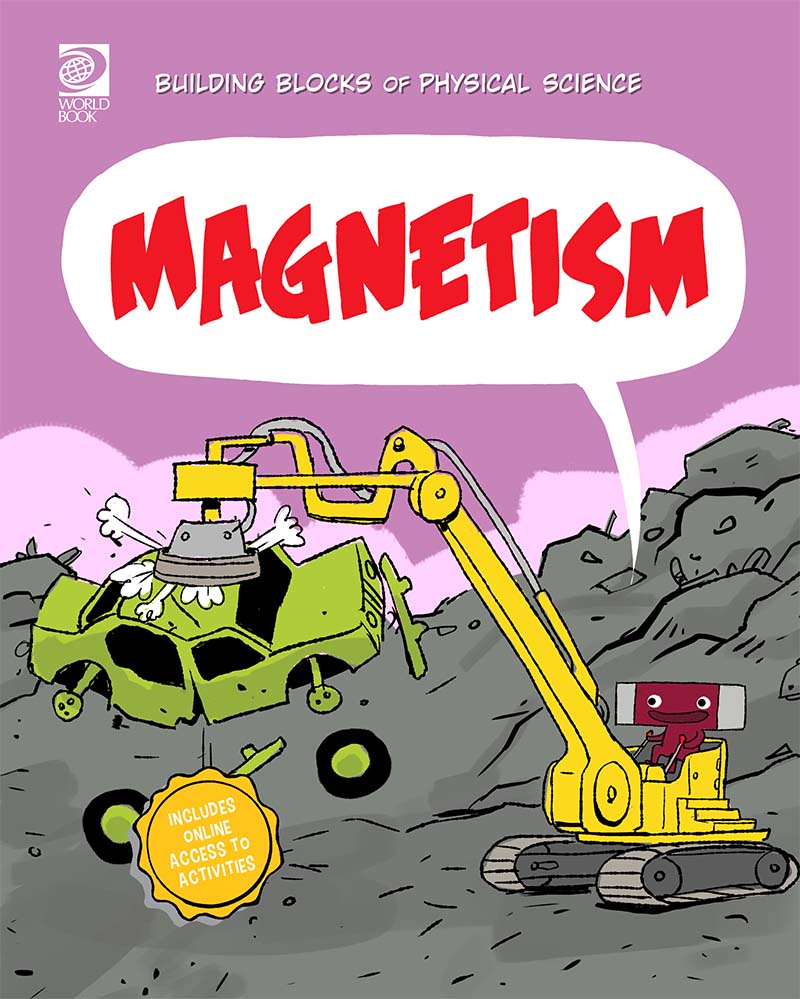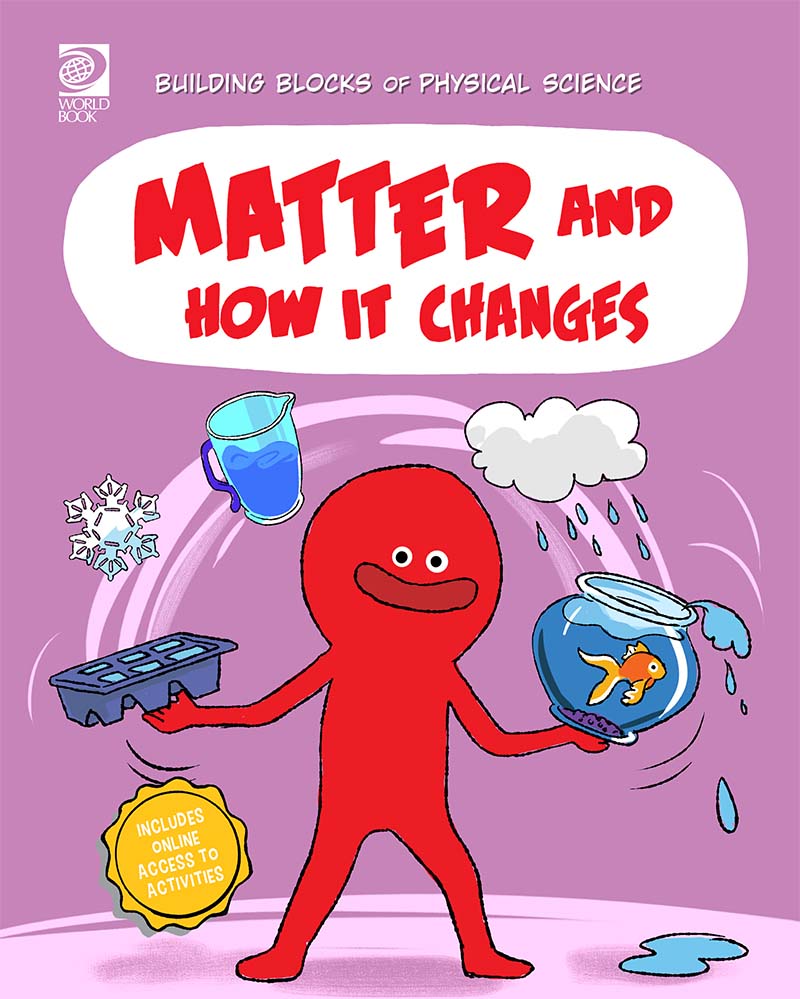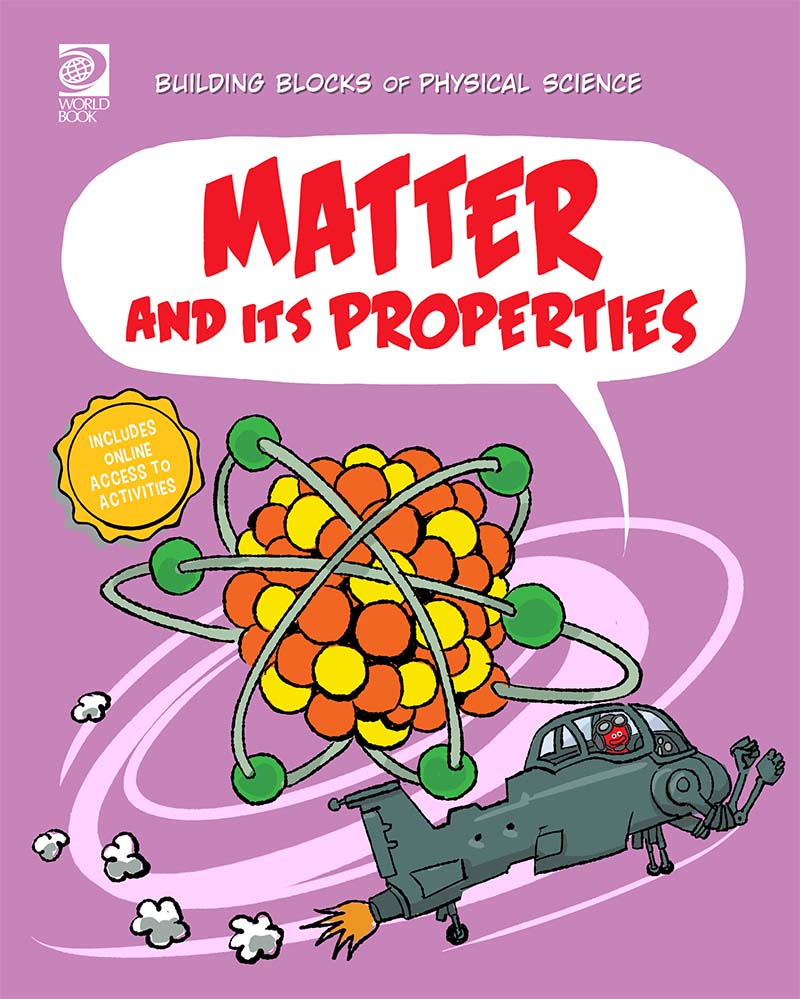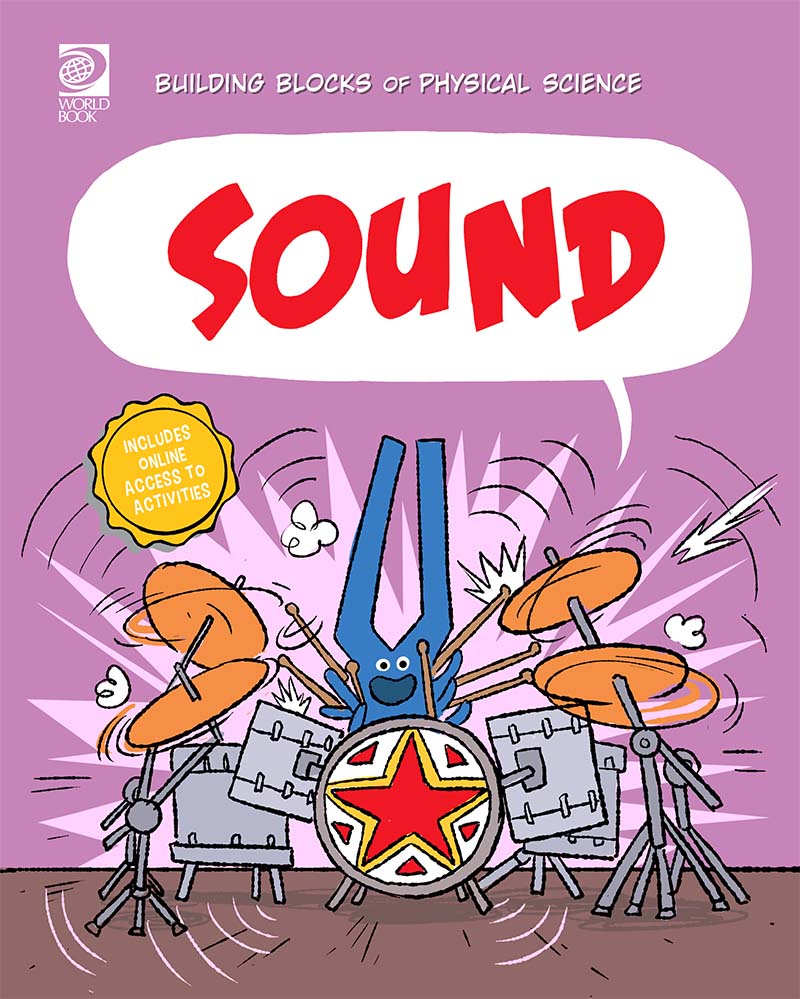Building Blocks of Physical Science
The Building Blocks of Physical Science Educator Section includes tools as well as ready-to-use classroom materials. Educators can see how the Next Generation Science Standards align with the Building Blocks of Physical Science books, organized by the grade level(s) they teach. In addition, educators will have access to reading resources such as discussion guides and comprehension checks as well as fun classroom activities! The Educators Section will also include engaging lessons, centered around standards, with built-in differentiation options to support all learners as they continue to explore this content.
Building Blocks of Physical Science Standards Alignment
Use this section to view how the Next Generation Science Standards align to the Building Blocks of Physical Science series.
Next Generation Science Standards
-
3rd Grade students who demonstrate understanding can:
Domain and Disciplinary Core Idea Performance Expectation Building Blocks Book(s) 3-PS2. Motion and Stability: Forces and Interactions 3-PS2-1. Plan and conduct an investigation to provide evidence of the effects of balanced and unbalanced forces on the motion of an object. Force and Motion 3-PS2-2. Make observations and/or measurements of an object’s motion to provide evidence that a pattern can be used to predict future motion. Electricity ,Force and Motion 3-PS2-3. Ask questions to determine cause and effect relationships of electric or magnetic interactions between two objects not in contact with each other. Electricity, Magnetism 3-PS2-4. Define a simple design problem that can be solved by applying scientific ideas about magnets. Magnetism -
4th Grade students who demonstrate understanding can:
Domain and Disciplinary Core Idea Performance Expectation Building Blocks Book(s) 4-PS3. Energy 4-PS3-1. Use evidence to construct an explanation relating the speed of an object to the energy of that object. Energy, Heat, Magnetism 4-PS3-2. Make observations to provide evidence that energy can be transferred from place to place by sound, light, heat, and electric currents. Electricity, Energy, Heat, Light, Magnetism, Matter and Its Properties, Sound 4-PS3-3. Ask questions and predict outcomes about the changes in energy that occur when objects collide. Energy, Heat, Light, Magnetism, Sound 4-PS3-4. Apply scientific ideas to design, test, and refine a device that converts energy from one form to another. Electricity, Energy, Heat, Light, Magnetism, Sound 4-PS4. Waves and their Applications in Technologies for Information Transfer 4-PS4-1. Develop a model of waves to describe patterns in terms of amplitude and wavelength and that waves can cause objects to move. Light, Sound 4-PS4-2. Develop a model to describe that light reflecting from objects and entering the eye allows objects to be seen. Light 4-LS1. From Molecules to Organisms: Structures and Processes 4-LS1-2. Use a model to describe that animals receive different types of information through their senses, process the information in their brain, and respond to the information in different ways. Heat, Light, Sound 4-ESS3. Earth and Human Activity 4-ESS3-1. Obtain and combine information to describe that energy and fuels are derived from natural resources and their uses affect the environment. Electricity, Energy 4-ESS3-2. Generate and compare multiple solutions to reduce the impacts of natural Earth processes on humans. Electricity, Energy -
5th Grade students who demonstrate understanding can:
Domain and Disciplinary Core Idea Performance Expectation Building Blocks Book(s) 5-PS1. Matter and Its Interactions 5-PS1-1. Develop a model to describe that matter is made of particles too small to be seen. Electricity, Heat, Matter and How It Changes, Matter and Its Properties 5-PS1-3. Make observations and measurements to identify materials based on their properties. Matter and How It Changes, Matter and Its Properties 5-PS1-4. Conduct an investigation to determine whether the mixing of two or more substances results in new substances. Matter and How It Changes, Matter and Its Properties 5-PS2.Motion and Stability: Forces and Interactions 5-PS2-1. Support an argument that the gravitational force exerted by Earth on objects is directed down. Force and Motion, Gravity 5-PS3. Energy 5-PS3-1. Use models to describe that energy in animals’ food (used for body repair, growth, motion, and to maintain body warmth) was once energy from the sun. Energy, Light, Matter and How It Changes 5-ESS3. Earth and Human Activity 5-ESS3-1. Obtain and combine information about ways individual communities use science ideas to protect the Earth’s resources and environment. Electricity, Energy -
Middle School students who demonstrate understanding can:
Domain and Disciplinary Core Idea Performance Expectation Building Blocks Book(s) MS-PS1. Matter and Its Interactions MS-PS1-1. Develop models to describe the atomic composition of simple molecules and extended structures. Electricity, Matter and Its Properties MS-PS1-2. Analyze and interpret data on the properties of substances before and after the substances interact to determine if a chemical reaction has occurred. Heat, Matter and How It Changes, Matter and Its Properties MS-PS1-4. Develop a model that predicts and describes changes in particle motion, temperature, and state of a pure substance when thermal energy is added or removed. Heat, Matter and How It Changes, Matter and Its Properties MS-PS2. Motion and Stability: Forces and Interactions MS-PS2-2. Plan an investigation to provide evidence that the change in an object’s motion depends on the sum of the forces on the object and the mass of the object. Force and Motion MS-PS2-3. Ask questions about data to determine the factors that affect the strength of electric and magnetic forces. Electricity, Magnetism MS-PS2-4. Construct and present arguments using evidence to support the claim that gravitational interactions are attractive and depend on the masses of interacting objects. Gravity MS-PS2-5. Conduct an investigation and evaluate the experimental design to provide evidence that fields exist between objects exerting forces on each other even though the objects are not in contact. Magnetism PS3. Energy MS-PS3-1. Construct and interpret graphical displays of data to describe the relationships of kinetic energy to the mass of an object and to the speed of an object. Energy MS-PS3-3. Apply scientific principles to design, construct, and test a device that either minimizes or maximizes thermal energy transfer. Energy, Heat MS-PS3-5. Construct, use, and present arguments to support the claim that when the kinetic energy of an object changes, energy is transferred to or from the object. Energy PS4. Waves and Their Applications in Technologies for Information Transfer MS-PS4-1. Use mathematical representations to describe a simple model for waves that includes how the amplitude of a wave is related to the energy in a wave. Light, Sound MS-PS4-2. Develop and use a model to describe that waves are reflected, absorbed, or transmitted through various materials. Light, Sound MS-LS1. From Molecules to Organisms: Structures and Processes MS-LS1-6. Construct a scientific explanation based on evidence for the role of photosynthesis in the cycling of matter and flow of energy into and out of organisms. Energy, Light MS-LS1-8. Gather and synthesize information that sensory receptors respond to stimuli by sending messages to the brain for immediate behavior or storage as memories. Light, Sound MS-LS2. Ecosystems: Interactions, Energy, and Dynamics MS-LS2-3. Develop a model to describe the cycling of matter and flow of energy among living and nonliving parts of an ecosystem. Energy MS-ESS1. Earth’s Place in the Universe MS-ESS1-2. Develop and use a model to describe the role of gravity in the motions within galaxies and the solar system. Gravity MS-ESS3. Earth and Human Activity MS-ESS3-3. Apply scientific principles to design a method for monitoring and minimizing a human impact on the environment. Electricity, Energy MS-ESS3-4. Construct an argument supported by evidence for how increases in human population and per-capita consumption of natural resources impact Earth’s systems. Electricity MS-ESS3-5. Ask questions to clarify evidence of the factors that have caused the rise in global temperatures over the past century. Heat
Reading Resources
Each book in the Building Blocks of Physical Science series comes with a Discussion Guide as well as a Comprehension Check! Each Discussion Guide includes 10 questions and is intended to be used during or after reading the text to help students better understand the content. Potential answers are also included. Each Comprehension Check also includes 10 questions and comes with an Answer Key. The Comprehension Check is intended to be used after reading and is a great assessment option.
Classroom Activities
These activities are designed for classroom use and can be used in both the small group and/or whole group setting. These activities bring some fun, engagement, and reflection to students’ learning!
Two Ways to Change Concept Sort
After reviewing concepts related to physical and chemical, students will collaborate to sort real-world scenarios into the two categories. This activity requires students to use higher level thinking skills to apply their knowledge as well as justify their responses. In addition, this activity includes optional differentiational considerations to help support and/or extend your students’ thinking.
Not Just in Lightbulbs
This activity in intended to help students better understand that electricity is a form of energy that can be found in many places, including in nature! Students will collaborate using the Double Pair Share differentiation strategy to explain how electricity is produced by and related to a variety of real-world situations.
The Truth About Magnets
In this activity, students will first evaluate statements about magnetism to determine whether they are true and second will modify and false statements so they are correct. This activity involves both independent thinking as well as opportunities for students to collaborate with their peers to deepen their understanding of magnetism.
Lesson Plans
World Book has created lesson plans that can be used to help deepen students’ understanding of the Building Blocks of the Human Body concepts. These full lesson plans are aligned to standards, include assessment options, describe possible differentiation considerations, and include a variety of ways for students to stay engaged in their learning. Many materials are included as quick and easy downloads for your convenience.
Simple Machines Jigsaw
This cooperative lesson is designed for students in grades 4-6. Students will use the jigsaw strategy to read about the six types of simple machines. Students will become an expert on one type and then share their knowledge with their peers to collect information about all six types of simple machines. Finally, students will use their notes and knowledge to complete a brief assessment about the six types of simple machines that are the bases of all other, more complex machines.
The Truth of the Matter
In this differentiated lesson, students will apply what they know about the different states of matter to demonstrate their understanding of ways in which thermal energy can cause matter to change in real-world situations. Students will use a visual note-taking guide to support a deepened understanding of matter at the particle level.
Force and Motion in the Real-World
This vocabulary-focused lesson is designed for students in grades 3-8 and after reading the Force and Motion book. Here, students will create definitions for vocabulary terms related to the major concepts of force and motion. They will then collaborate with peers revise and edit their writing. Finally, students will demonstrate their understanding by independently applying what they know to a variety of real-world scenarios.
